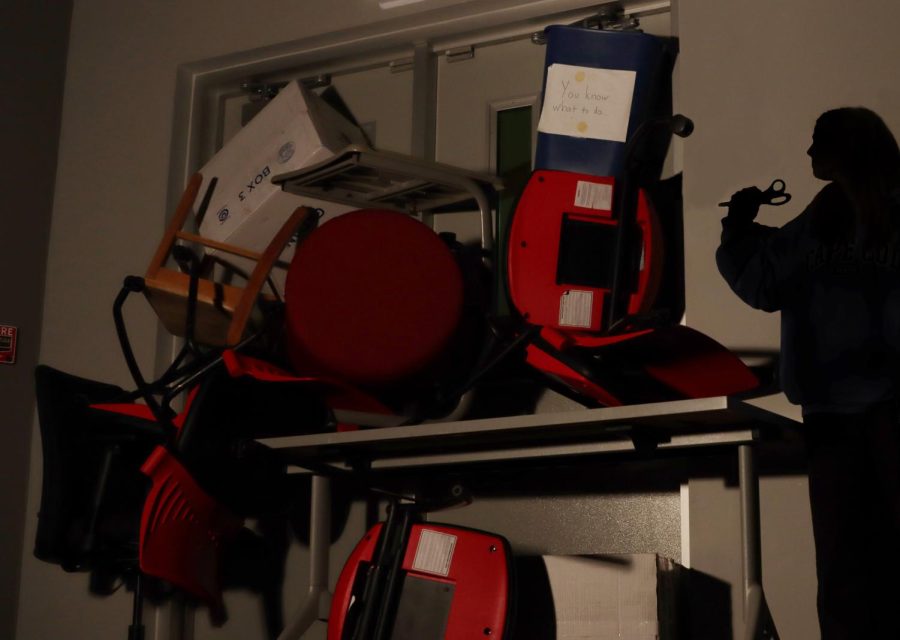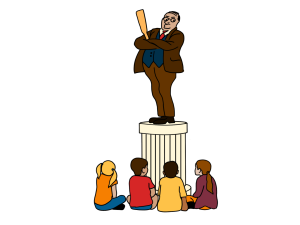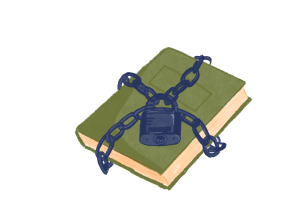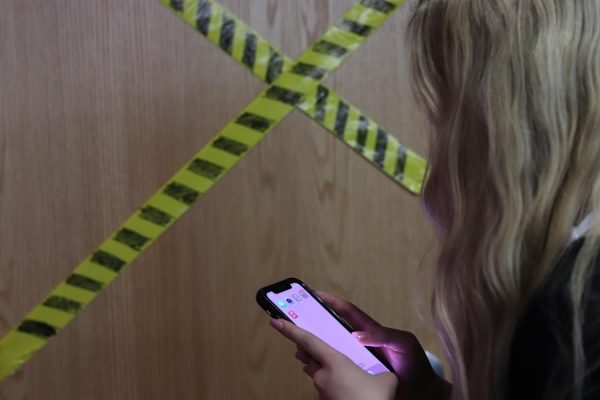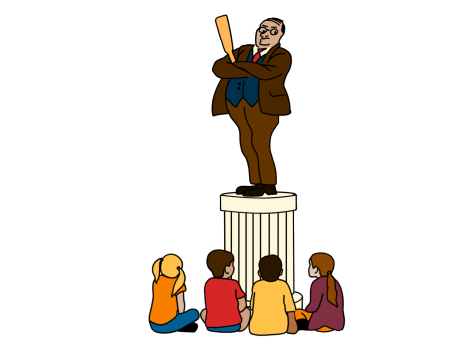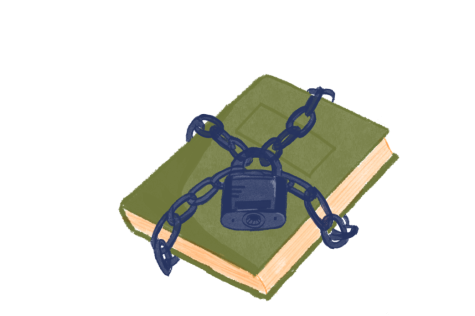Call Ed: Too close to home
School is a place where we learn about the world, a place where we grow into ourselves, a place where we should feel safe.
Jean Kuckza, mother of five, woke up the morning of Oct. 24, got ready and drove to work at Central Visual and Performing Arts (CVPA) high school like she had almost every day since 2008. Alexandria Bell, sophomore at CVPA, did the same, except she had to get a ride to school since her 16th birthday wasn’t for another month. By lunchtime, Kuzcka stood between a gun and her students to shield them from a shot, while Bell was killed in dance class down the hall. The school had metal detectors on all of the entrances, seven security officers present on the day of the shooting, a code word to inform the school of an intruder and a locked door policy, according to the St. Louis Post-Dispatch. Despite these precautions, Bell and Kuzcka died, bringing the number of school shooting victims in 2022 to 32.
Criminal justice experts said the shooting marked the 257th U.S. in-school gun incident in 2022. This is a record amount, surpassing 250 incidents in 2021 and 119 in 2019. The impact of school shootings and being so close to home has severely impacted students at KHS. Some question security procedures and fear that there is more than can be done to guarantee their safety. But, no matter how many drills students practice as a school or the amount of doors locked, students will always be at risk and pay for the consequences of gun violence in America. TKC staff voted that 44/58 (75.9%) don’t feel safe at KHS given the current safety measures.
Firearms are the leading cause of death for children in the U.S., making up 20% of child deaths according to the CDC. Gun violence killed 4,357 children in the U.S. in 2020, however only 10 in Australia after Government officials united to remove semi-automatic and pump-action shotguns and rifles from civilian possession in Australia, according to BJM. This number, while staggering, doesn’t seem to scare people into realization or action. School shootings have risen to the highest number in 20 years, and will continue to get worse. With 37% of American adults owning a gun, and 44% living in a gun household according to GallUp, people are scared.
Orlando Harris was the 19-year-old gunman at CVPA, and a former student of the high school. Harris failed his federal background check that would allow him to purchase a gun. Days later, Harris bought an AR-15 from a private seller, which he then used to murder Bell and Kuzcka. According to the American Academy of Pediatrics, 40% of firearms in the U.S. are bought through a federally-licensed gun dealer. The other 60% buy firearms from private dealers; usually purchased from flea markets, gun shows and private gun sales not subject to government regulations. There are two categories we can put school shooters into: those who obtain deadly weaponry through unlawful ways, or those who purchase guns in a legal manner, yet aren’t questioned for the risk factors they possess.
Nineteen U.S. states have enacted the Extreme Risk Protection Order Law, a law known as a “red flag law.” This essentially prevents individuals who show suspicion toward threatening themselves or others from buying firearms. Colorado filed 109 ERPO petitions in 2020, which denied access for those 109 people to purchase guns out of suspicion. Sixty-one were granted for a temporary ERPO, and 49 for a gun (year-long) according to Injury Epidemiology. This means that 109 people were sent away for a temporary or year long time frame after trying to purchase deadly weapons. If there are any second thoughts regarding “selling a gun to someone who maybe shouldn’t have one,” then the answer is no. The “red flag law” protects the life of the gun witholder and lives of those around them. More U.S. states should consider implementing this law, to ensure safety of their citizens.
Eliminating guns from the hands of people who should not have them is nearly impossible. The Second Amendment of the U.S. Constitution guarantees “the right of the people to bear arms,” and there is nothing we can do to change that. But, what we can do is regulate who can get their hands on them, or help those struggling with severe mental illnesses before they turn to firearms in an unlawful manner.
And we need to help those who are struggling. You’ve heard it a million times: we need to improve mental health. Seven out of 10 school shooters are under the age of 18 according to Insider. The Office of Population Affairs said an estimated 49.5% of adolescents have had a [diagnosed] mental health disorder at some point in their lives. Let’s put two and two together – no sane person decides to shoot up a school. Mental illness in our country needs to be taken more seriously; and that starts with the youth.
Mental Health America, a leading charity for mental health in the U.S., aims to create conversations about the roots of mental health problems within their social media platforms and events. They believe educating others about mental health is key for an individual’s process of recovery. Over the past decade, mental health awareness has reached the highest it’s ever been. Whether it’s positive affirmations on Instagram stories, or quotes on a classroom wall, people are trying to help. Though an Instagram story from an influencer’s “mental health account” won’t stop a school shooter. These issues need to be solved from a deeper level.
Missouri law requires one counselor to be present at school per 400 kids. As of now, there is an average of 374 students per counselor in the U.S., and a recommendation of 250 students per counselor. It’s estimated that one-third of Gen Z considers themselves to have bad mental health, which means 134 students could potentially need to talk to a counselor. KHS has four grade level counsolers, a social worker and an intensive support counselor. There are currently two positions vacant: an ALT-Education worker and a Barnes Jewish Christian (BJC) counselor position. These positions can be classified under the name of “social workers,” or essentially people who can help KHS students throughout the day with whatever they may be going through.
Robin Kennedy, school resource counselor for the junior class, meets with roughly 17 students per day, and helps them with scheduling classes and working through their mental issues and stressors. Kennedy said the processes she goes through during her workday takes away from time that she could be talking to students. When Kennedy receives an email from a student about scheduling, it’s not always an easy fix. Kennedy said because she works with students on their schedules, her discussions regarding mental health are often overlooked.
KHS counselors and principals have not denied wanting more school counselors. They believe there is no harm in hiring more social workers, and that it could really help students. If counselors were more available during the school day, students would have more opportunities to work through their mental struggles. Instead of bottling up emotions, they would feel as if they had a place to go, or a person to talk to. No matter the size of a school, any progression toward helping kids with mental issues is a major step to how we view it as a society.
School is a place where we learn about the world, a place where we grow into ourselves, a place where we should feel safe. It’s horrifying to think about the “what if’s” children could face each day they show up at school. Increasing security seems like an easy way out, a strategy to end violence within our schools. Though increasing security has proven it’s not the master solution; we need to analyze the root of the problem. Deadly weapons are in the hands of those who should not have them. Lawmakers, do better. Acknowledge the price children pay for the lack of regulation. Mental health has reached an all time high, and there are things we can do to stop that. Schools, do better and hire more counselors. Let students feel as if they have someone to talk to. And for the individual person, check on your friends. Make sure they feel loved and supported. We all must do better.
Your donation will support the student journalists of Kirkwood High School. Your contribution will allow us to purchase equipment and cover our annual website hosting costs.
This is the opinion of the entire Kirkwood Call staff.
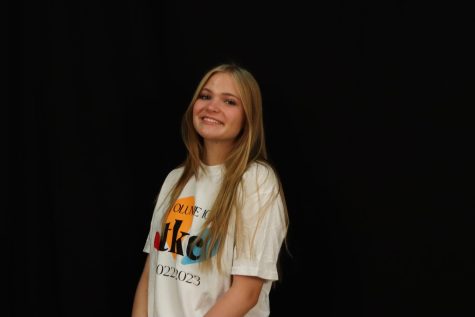
She/Her
Hobbies and Interests: photography, piano, hiking, reading
Favorite song: New Year's Day by Taylor Swift
Favorite Quote: "To define...


